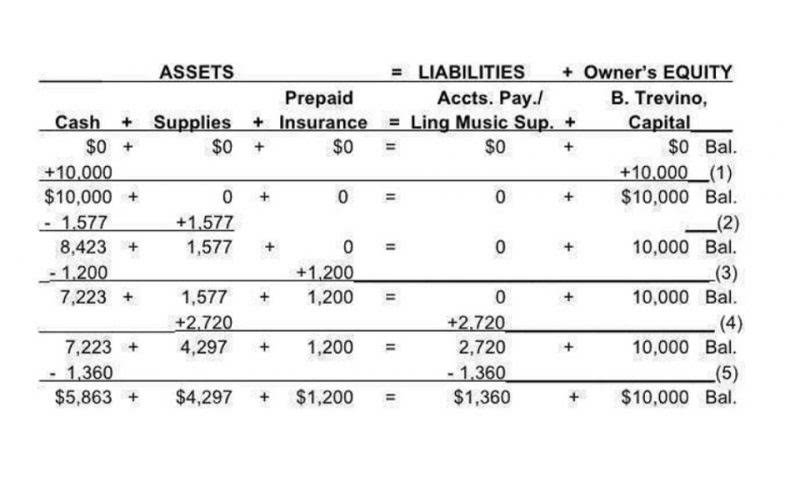![]()
The precision of these balances is crucial for calculating net income, which is a key indicator of the company’s profitability. The concept of a normal balance for each account https://www.bookstime.com/ type is integral to the coherence of financial records. It refers to the side of the ledger—debit or credit—where the balance of the account is customarily found.
- Ensuring the accuracy of account balances is a continuous process that involves meticulous examination and reconciliation.
- A third choice for trust funds is a traditional interest-bearing escrow or trust account into which all trust funds are deposited by the law firm.
- This distinguishes the double-accounting method from the single-accounting method, which only tracks revenue and expenses.
- Since your company did not yet pay its employees, the Cash account is not credited, instead, the credit is recorded in the liability account Wages Payable.
- By applying expected transactions to the normal balances of accounts, financial professionals can simulate the effects of business decisions on the company’s financial trajectory.
- The dual nature of transactions is captured through debits and credits, the two fundamental aspects of double-entry bookkeeping.
Understanding the normal balance of accounts
He is the sole author of all the materials on AccountingCoach.com. For the past 52 years, Harold Averkamp (CPA, MBA) has worked as an accounting supervisor, manager, consultant, university instructor, and innovator in teaching accounting online. We define an asset to be a resource that a company owns that has an economic value.

Cost Principle
To show how the debit and credit process works within IU’s general ledger, the following image was pulled from the IUIE database. Employees who are responsible for their entity’s accounting activities will see a file such as the one below on more of a day-to-day basis. This general ledger example shows a journal entry being made for the payment (cash) of postage (expense) within the Academic Support responsibility center (RC).
The Accounting Equation
Each of the accounts in a trial balance extracted from the bookkeeping ledgers will either show a debit or a credit balance. The normal balance of any account is the balance (debit or credit) which you would expect the account have, and is governed by the accounting equation. Even the most careful lawyer or law firm can make an honest mistake with an escrow or trust account. Careful adherence to and supervision of the rules will minimize the consequences, but there are certain things that will flow inevitably from a bounced check on an attorney escrow or trust account. All monthly bank statements, cancelled checks, deposit slips, check books and check stubs must be maintained for seven years.
Have Backup for Important Tax Documents
In reality, normal balances indicate the side of the ledger that increases the account. For instance, while expenses have a normal debit balance, it is not expected that these accounts will always have a debit balance at the end of a period. Expenses are periodically closed to equity, which can result in a temporary zero balance. Understanding these nuances is crucial for interpreting financial data accurately and avoiding misinformed conclusions about a company’s financial health. Expense accounts are used to record the consumption of assets or services that are necessary to generate revenue. These accounts typically have a debit balance because expenses decrease equity.
Accounts chart
Depending on the size of a company and the complexity of its business operations, the chart of accounts may list as few as thirty accounts or as many as thousands. A company has the flexibility of tailoring its chart of accounts to best meet its needs. This includes contributed capital, retained earnings, and in some cases, drawings or dividends. Equity accounts typically have a credit balance, as they represent the residual interest in the assets of the company after deducting liabilities.

Accounting Debits vs Credits: The Difference for Beginners
The basic components of even the simplest accounting system are accounts and a general ledger. An account is a record showing increases and decreases to assets, liabilities, and equity—the basic components found in the accounting equation. As you know from Introduction to Financial Statements, each of these categories, in turn, includes many individual accounts, all of which a company maintains in its accounting normal balances general ledger. A general ledger is a comprehensive listing of all of a company’s accounts with their individual balances. New York has very specific rules on what records a lawyer or law firm must maintain for an escrow or trust account. All lawyers, even those who are not directly responsible for their firm’s trust accounts, should be familiar with the requirements, which are strictly enforced.
Debits vs credits
Who Controls Disbarred Lawyer’s Trust Account? — Proposed Amendments to DR 9-102(G)
- Even though the customer has not yet paid cash, there is a reasonable expectation that the customer will pay in the future.
- Here are a few of the principles, assumptions, and concepts that provide guidance in developing GAAP.
- Though there are many similarities between the conceptual framework under US GAAP and IFRS, these similar foundations result in different standards and/or different interpretations.
- Assume he bought the computers with cash and his starting cash account had $25,000 in it.
- The full disclosure principle states that a business must report any business activities that could affect what is reported on the financial statements.

